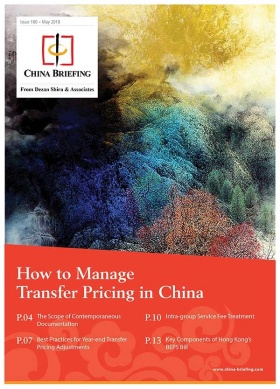Preferential CIT Policies for Small and Low-Profit Enterprises in China

China’s State Administration of Taxation (SAT) clarified its preferential corporate income tax (CIT) policies for small and low-profit enterprises in an announcement released on July 13.
The Announcement about Further Expanding the Scope of Preferential Income Tax Policies for Small and Low-Profit Enterprises explains the types of enterprises that qualify for preferential CIT policies and for what length of time.
From January 1, 2018 to December 31, 2020, small and low-profit enterprises will be eligible for preferential CIT policies if their taxable income in the previous year amounted to no more than RMB 1 million (US$148,080).
![]() RELATED: CIT Deductions in China: Tax Department Clarifies Documents Required
RELATED: CIT Deductions in China: Tax Department Clarifies Documents Required
If an enterprise’s taxable income in the previous year was greater than RMB 1 million, or if it is a newly-established enterprise that had no taxable income in the previous year, such enterprises can still qualify for preferential CIT policies – if taxable income for the current year is estimated to be RMB 1 million or less.
Eligible enterprises will only have to pay tax on half their taxable income, at a rate of 20 percent, as outlined in the Ministry of Finance and the SAT’s Circular on Further Expanding the Scope of Preferential Income Tax Policies for Small and Low-Profit Enterprises (Cai Shui [2018] No. 77).
For example, if an enterprise earns RMB 500,000 (US$74,040) in taxable income, RMB 250,000 will be taxed at a 20 percent rate and the remaining RMB 250,000 (US$37,020) will not be taxed.
In addition to preferential tax rates, eligible enterprises will also benefit from simplified tax filing procedures.
The preferential tax rates for small and low-profit enterprises first came into effect on October 1, 2015 and have since been extended and expanded in scope.
Previously, the upper limit for small and low-profit enterprises to qualify for preferential CIT policies was RMB 500,000.
![]() Tax Planning Services from Dezan Shira & Associates
Tax Planning Services from Dezan Shira & Associates
However, the ceiling was raised to RMB 1 million as part of an RMB 60 billion (US$8.8 billion) tax cut package released in April this year, which also included relief for high-tech firms.
In his Work Report delivered at the Two Sessions meetings in March, Chinese Premier Li Keqiang pledged to cut up to RMB 800 billion (US$118.46 billion) worth of taxes for businesses and individuals in 2018.
In addition to cutting taxes for small and low-profit enterprises and high-tech firms, in May, China reduced its value-added tax (VAT) rates as part of an RMB 400 billion (US$59.21) tax cut package.
About Us
China Briefing is produced by Dezan Shira & Associates. The firm assists foreign investors throughout Asia and maintains offices in China, Hong Kong, Indonesia, Singapore, Russia, and Vietnam. Please contact info@dezshira.com or visit our website at www.dezshira.com.
- Previous Article Why Businesses Should Pay Attention to China’s Government Inspections
- Next Article How to Manage Statutory Annual Leave in China






